The ASUS TUF Gaming 850W Gold PSU Review: Tough But Fair
by E. Fylladitakis on August 31, 2023 9:00 AM EST- Posted in
- Cases/Cooling/PSUs
- PSUs
- Asus
- 80Plus Gold
- ATX v3.0
Cold Test Results (~26°C Ambient)
For the testing of PSUs, we are using high precision electronic loads with a maximum power draw of 2700 Watts, a Rigol DS5042M 40 MHz oscilloscope, an Extech 380803 power analyzer, two high precision UNI-T UT-325 digital thermometers, an Extech HD600 SPL meter, a self-designed hotbox and various other bits and parts. For a thorough explanation of our testing methodology and more details on our equipment, please refer to our How We Test PSUs - 2014 Pipeline post.
The overall efficiency of the ASUS TUF Gaming 850W Gold PSU is very good, with the unit easily meeting the 80Plus Gold requirements with an input voltage of 115V. Although the unit has its efficiency certification officially only with an input voltage of 115V, it would also pass the higher efficiency requirements and receive the 80Plus Gold certification with an input voltage of 230V if ASUS pursued it. The average nominal load range (20% to 100% of the unit's capacity) efficiency is 90.9% when powered from a 230 VAC source, which drops to 89.8% with an input voltage of 115 VAC. Generally speaking, the unit seems optimized for an input voltage of 230V, as there is a significant efficiency gap, especially at very high loads.
ASUS went with a semi-passive thermal design with an impressively lax cooling profile that has the unit operating fanless for more than half its entire load range. Once the fan starts, which would take a load of over 550 Watts at room temperature, it is barely audible. The fan speed quickly increases as the load reaches the maximum of the unit’s capacity but never becomes too loud. Conversely, the internal temperatures of the unit are allowed to climb significantly before the fan begins to spin, suggesting that ASUS’ engineers have a lot of faith in the resilience of this unit’s components.


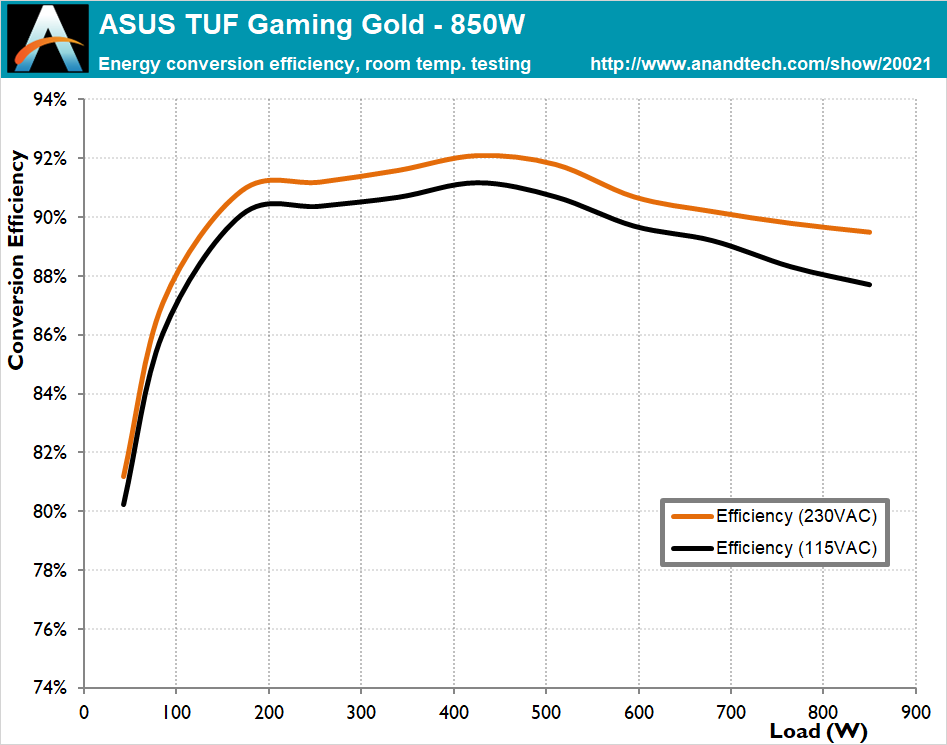
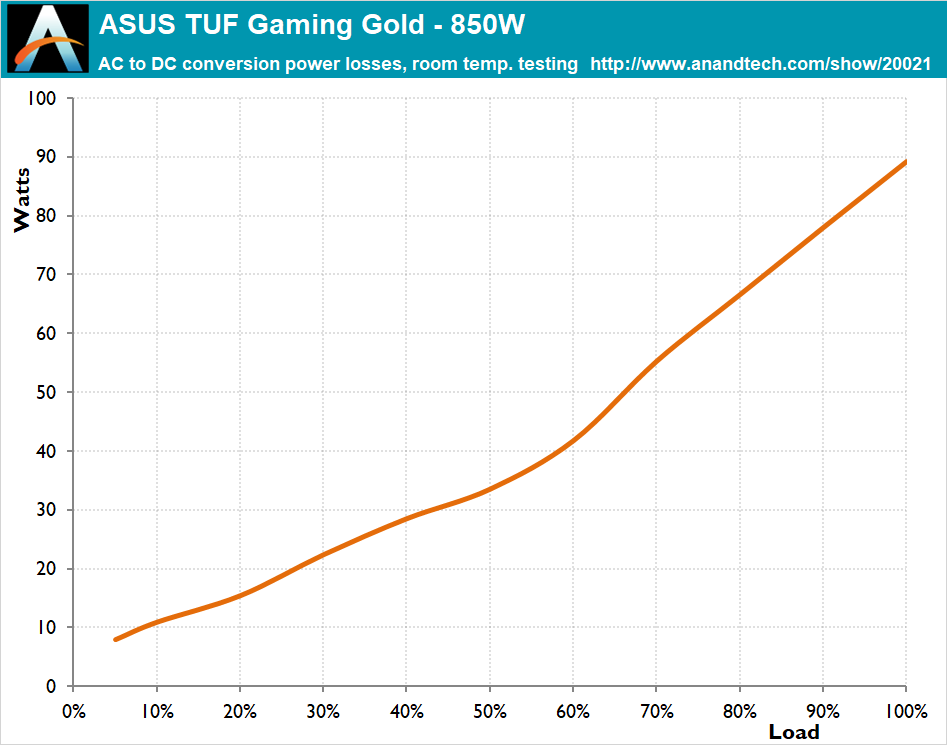
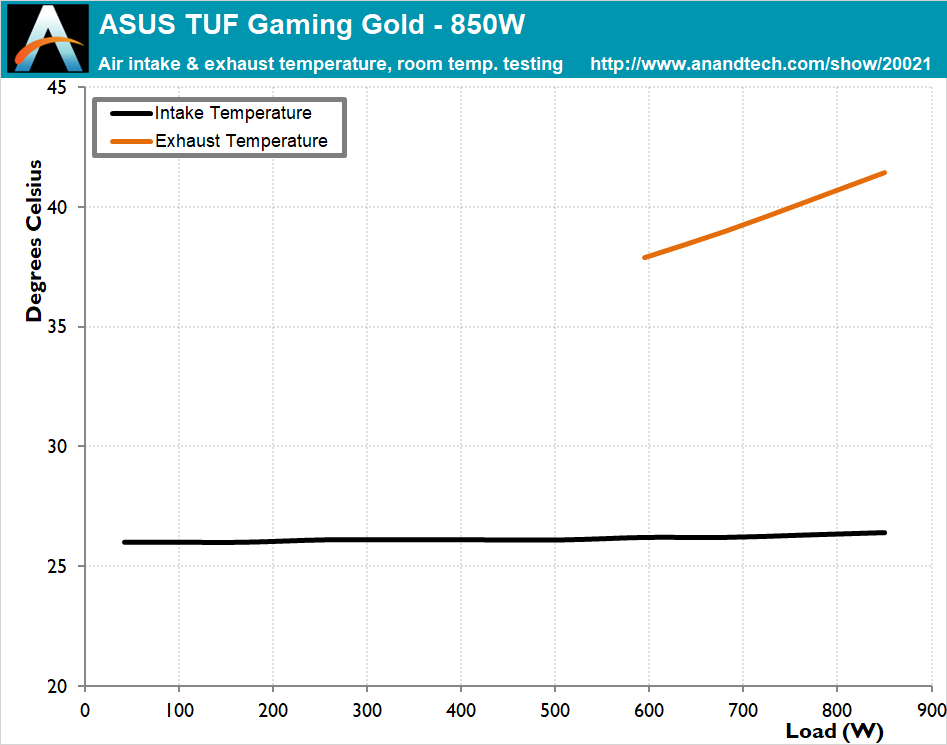
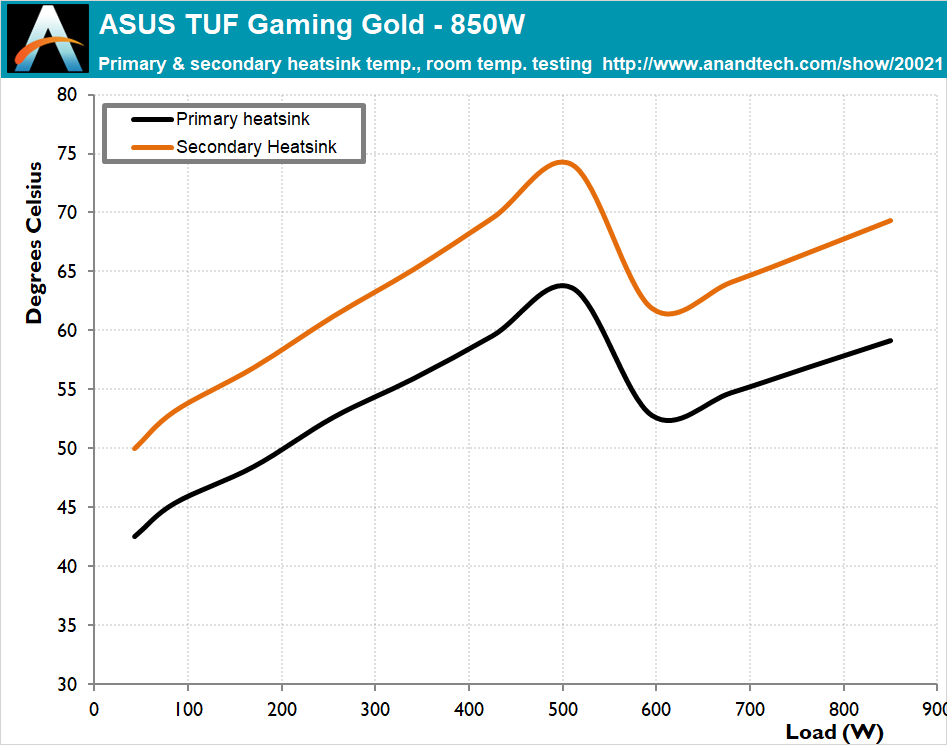
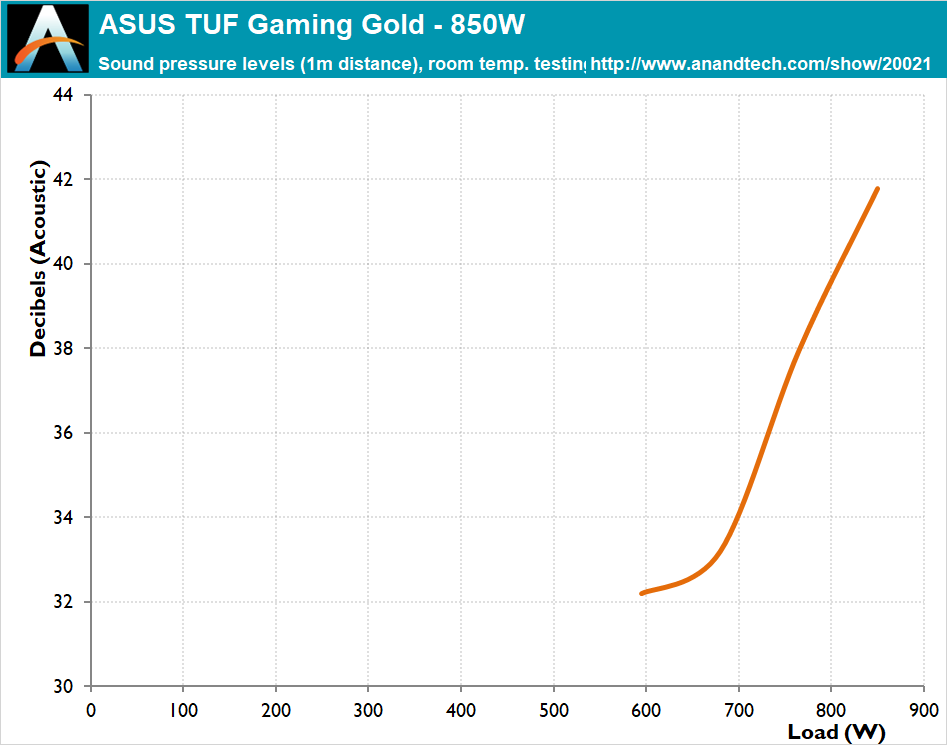








8 Comments
View All Comments
Threska - Thursday, August 31, 2023 - link
Minimalistic in it's sameness. Pretty much only thing bringing them out of that is different transistors and RGB.ingwe - Thursday, August 31, 2023 - link
Given the positive conclusion, I think the article headline/title should be changed. Based on that I expected a negative take on the product based on that. Meaning I expected "tough but fair criticism" based on the price/performance etc.Oxford Guy - Thursday, August 31, 2023 - link
He was obligated to have Tough in there because the product is marketed with that word ('TUF').Tough and Fair folk are Great Wall military types, you know.
Igor_Kavinski - Friday, September 1, 2023 - link
Thank you so much for the great review!Samus - Saturday, September 2, 2023 - link
The only thing missing from this PSU is a fan profile switch - something present on many other PSU's in this class, Seasonic "Hybrid Mode" EVGA "ECO Mode" etc.This would greatly help my anxiety when running in the 500w power envelope (which is often where my systems hovers while gaming (depending on the game) with in i7-12700k and RTX 4070Ti. CPU hits PL1 sometimes in Battlefield 2042 but almost no games hit PL2, which would increase the system total power consumption to 650w assuming the GPU was loaded up too. Furmark + CPU burn simulates this, and to get a total system load draw, I have a disk IO torture test running with all SSD's, HDD's, and a few USB 3.0 flash drives to pull some bus power.
This makes an 850w PSU unnecessary for my system, but a little headroom is good for efficiency, longevity and upgradability. The problem is longevity is questionable if this thing is constantly running hot and the fan doesn't turn on at 500-watt sessions. The capacitors especially are rated for a fixed amount of hours at 95-105c and the further you stay away from that range, the longer the cap will last. And tin\lead free solder is not good with heat cycling above 105c that this PSU can hit if ambient temps are high.
Overall its a great product ruined by a bad cooling curve. The fan itself is questionable considering it doesn't even reach its 'rated' RPM. Is it just me or is the appeal of a silent PSU when drawing 500+ watts of power a weird concept. More than likely you are in a game (no single CPU and disk IO will draw 500w) except in edge cases where this PSU is oddly used in a workstation for GPU-based rendering. And if you are in a game, your other components cooling systems are going to greatly overpower whatever sound pressure this PSU's fan hits.
Claudius-07 - Sunday, September 3, 2023 - link
Can someone please explain to an old person: I have a new mobo and it has DDR5 and has 2 8 pin power connectors at the top of the mobo for CPU power. I have the new mobo and a new CPU and the RAM. The video card I bought is a RX 6800. It also has 2 8 pin power connectors. I do not understand, do I need a NEW Power supply ATX 3.0 and PCI5? Do I just need a PS that has at least 4, 8 pin connectors?E.Fyll - Monday, September 4, 2023 - link
Any PSU with two EPS and two PCI Express connectors will do. Note that EPS and PCI Express connectors are different, even if the number of pins is the same. That system does not need an ATX 3.0 compliant unit nor a PCI-E 5.0 connector.RomanPixel - Wednesday, September 6, 2023 - link
Aww man, they didn't change the 12VHPWR connector to a 12V-2x6 before pushing this out.